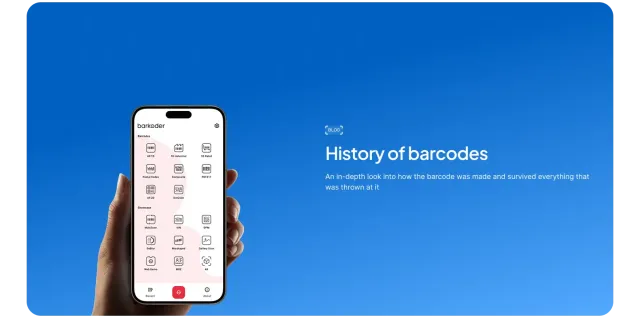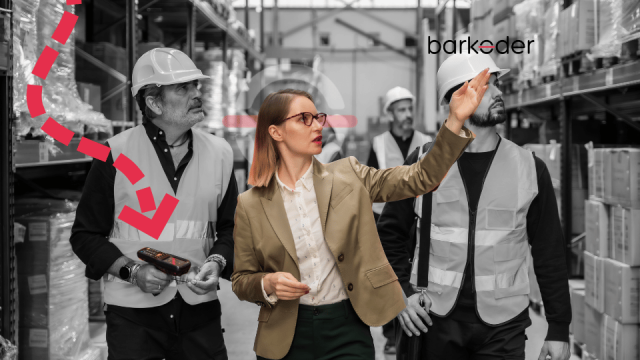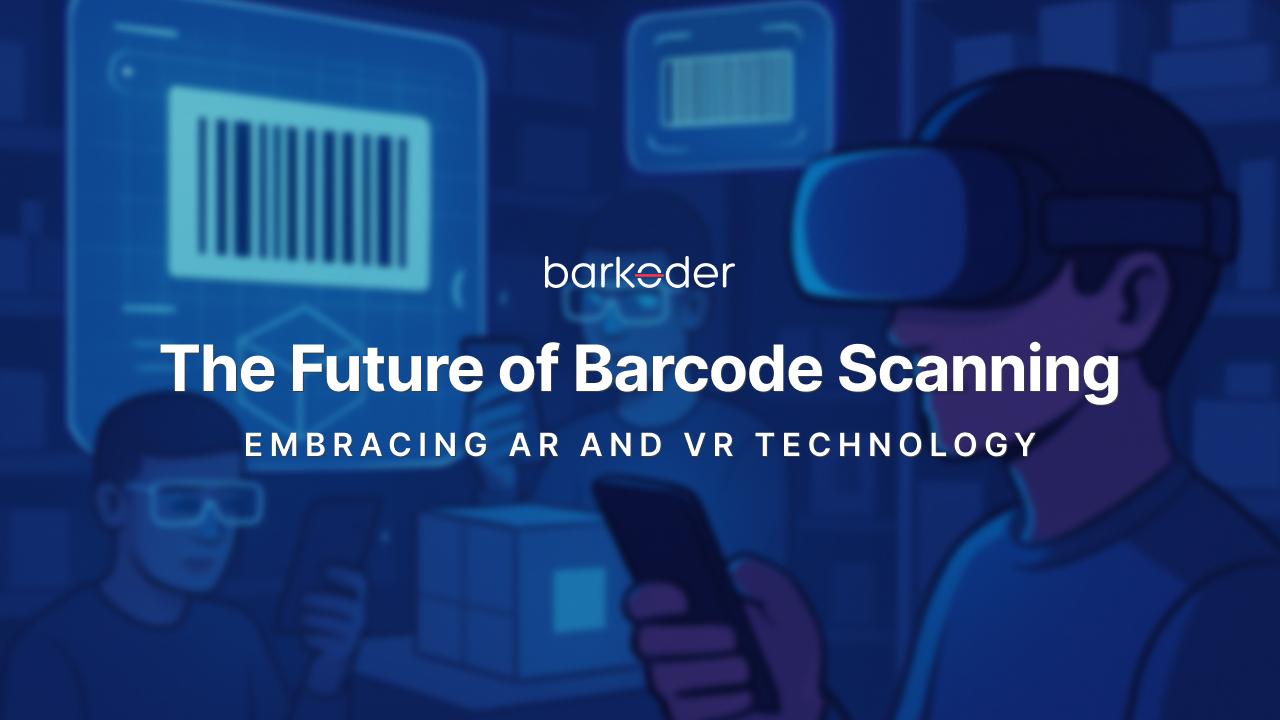
The Future of Barcode Scanning: Embracing AR and VR Technology
Barcode scanning has come a long way from the days of clunky handheld devices, single-use laser scanners, and static checkout counters. Once limited to simple price lookups and inventory control, barcode scanning is now undergoing a digital transformation. With the rise of Augmented Reality (AR) and Virtual Reality (VR) technologies, it’s evolving into a fully immersive, intelligent experience — one that redefines how we interact with physical products, environments, and workflows.
“At barKoder, we believe barcode scanning is no longer just a backend process — it’s becoming a frontline interface between the physical and digital worlds. By integrating AR and VR into our scanning workflows, we’re giving businesses the power to act on data in real time, with context, clarity, and confidence. This isn’t just an evolution of scanning — it’s a transformation of how work gets done.”
— Vangel Ivanov, CEO of barKoder
Today’s businesses are under pressure to do more with less — to move faster, reduce errors, and empower frontline workers without adding complexity. This is where AR and VR merge with barcode scanning to deliver a new kind of efficiency. Instead of viewing barcodes as just “data points,” companies are beginning to treat them as real-time interaction triggers — part of a live, digital ecosystem.
With AR overlays, workers can visualize information directly on top of physical objects — like seeing part numbers, inventory levels, or expiration dates appear instantly as they scan. In VR environments, teams can simulate scanning workflows, train remotely, or even manage virtual warehouses without being physically present.
This fusion of physical and digital worlds is reshaping barcode scanning across industries: from smart factories and fulfillment centers, to pharmacies, field service, and retail experiences. It’s no longer just about capturing data — it’s about using that data to make smarter, faster decisions on the spot.
Let’s dive into how AR and VR are unlocking the next frontier of barcode scanning — one that’s immersive, intelligent, and designed for the future of work.
From Utility to Experience
Traditional barcode scanning focuses on one thing: decoding data.
In contrast, AR and VR-enhanced scanning adds context, depth, and interaction — helping users not only scan, but understand what they’re scanning in real time.
Imagine pointing a device at a warehouse shelf and instantly seeing:
Product quantities,
Expiry dates,
Reorder status,
—all overlaid in your view without even tapping the screen.
That’s the AR experience, and it's happening now.
What AR and VR Bring to Barcode Scanning
Augmented Reality (AR) Enhancements
Augmented Reality (AR) is a technology that superimposes digital elements—such as images, sounds, or other sensory enhancements—onto the user’s real-world surroundings. Unlike Virtual Reality (VR), which fully immerses users in a completely virtual environment, AR enhances the physical world by adding a digital layer on top of it. AR experiences are commonly accessed through devices like smartphones, tablets, or specialized AR glasses and headsets. This blending of virtual content with the real world creates a seamless interaction where users can engage simultaneously with both physical and digital elements.
Hands-Free Scanning: Using smart glasses (like Microsoft HoloLens or Vuzix), workers can scan and view barcode data without holding a phone or scanner.
Live Data Overlays: Instantly see product info, instructions, or alerts right on top of the scanned item.
Contextual Awareness: AR can guide the user to the correct item by highlighting it in real space (e.g., picking systems).
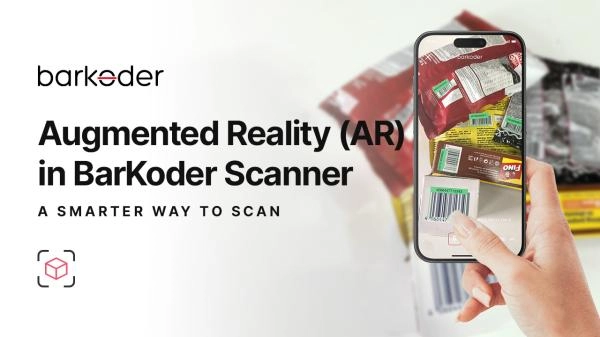
Virtual Reality (VR) Transformations
Virtual Reality (VR) is a technology that creates a fully immersive, computer-generated environment, completely separating the user from the physical world. Using specialized devices like VR headsets, gloves, or motion-tracking systems, users can explore and interact with a simulated digital space. Unlike Augmented Reality (AR), which adds digital elements to the real world, VR replaces the real environment entirely with a virtual one, offering an all-encompassing experience.
Training Simulations: Employees can learn to scan and sort items in a fully immersive digital warehouse before touching real equipment.
Digital Twin Integration: Scans in the real world reflect instantly in a virtual replica of the space, enabling predictive planning and remote monitoring.
Virtual Warehousing: Managers can interact with and scan through inventory in a 3D space without ever leaving their office.
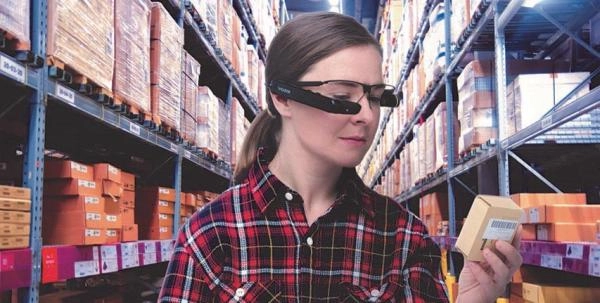
Real-World Applications
Logistics & Warehousing
AR-powered barcode scanning enables pickers to locate items faster and reduce errors with visual confirmations. Using smart glasses or AR-enabled mobile devices, warehouse workers can see digital overlays that guide them directly to the correct shelf, bin, or pallet. Instead of relying solely on printed pick lists or handheld screens, AR highlights the exact location of the product in real time, drastically reducing the time spent searching.
Once an item is found and scanned, AR can instantly provide a visual confirmation — such as a green checkmark or success animation — ensuring that the correct product has been selected. This minimizes the risk of human error, which is especially valuable in operations handling thousands of SKUs under tight deadlines.
In high-volume environments, such as e-commerce fulfillment centers or large-scale logistics hubs, these improvements translate into measurable gains:
Faster order fulfillment,
Lower error rates,
Reduced employee fatigue, and
Higher customer satisfaction.
Moreover, AR interfaces can provide additional information on the spot — like quantity remaining, storage conditions, or packaging instructions — all without requiring the worker to switch screens or devices. This leads to smoother workflows, shorter training time, and an overall boost in operational efficiency.
As more businesses digitize their supply chains, AR-powered scanning is becoming a key enabler of smart warehousing, offering a scalable and intuitive way to improve both speed and accuracy on the floor.

Healthcare
Medical staff can use AR to scan patient wristbands or medicine packages hands-free, with overlays showing dosage, allergies, or interactions — improving both speed and safety. Using AR-enabled smart glasses or tablets, nurses and doctors can quickly verify patient identities, match prescriptions, and ensure the right medication is delivered at the right time — all without looking away from the patient or flipping through paper charts.
When a wristband or medication barcode is scanned, AR can display critical patient data in real time, including:
Dosage schedules
Known allergies
Drug interaction alerts
Treatment history
Lab results or vitals
This reduces the risk of human error — one of the leading causes of preventable harm in clinical settings — and allows for faster, more informed decision-making at the point of care.
In busy hospital environments where time is crucial and distractions are frequent, AR provides an extra layer of safety and clarity. For example, if a nurse attempts to scan a medication intended for a different patient, the system can trigger an immediate visual warning, helping to prevent potentially dangerous mix-ups.
Beyond bedside use, AR scanning can also streamline:
Inventory checks in hospital pharmacies
Sterilization tracking for surgical instruments
Supply chain transparency for critical medical equipment
As healthcare continues to adopt digital transformation tools, AR-powered barcode scanning stands out as a solution that enhances both efficiency and patient care, empowering medical professionals with instant, context-rich data — right where they need it.
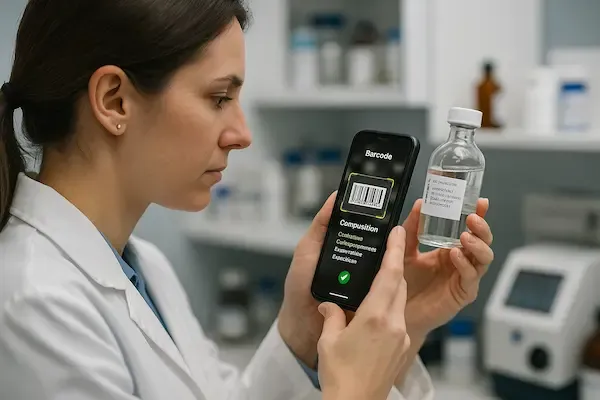
Retail
AR scanners can transform the customer experience by turning everyday in-store shopping into a dynamic, personalized journey. Imagine walking through a store, pointing your phone or AR glasses at a product, and instantly seeing price comparisons, customer reviews, product specifications, or even availability in different sizes or colors— all overlaid in real time, right on top of the product.
With AR, there's no need to open a separate app or search manually. Instead, the scanner recognizes the barcode or packaging and triggers an interactive layer of content that guides the shopper’s decision-making process. This enables:
Smarter purchasing decisions
Faster product discovery
More engaging retail interactions
Retailers can take this even further by integrating personalized offers based on loyalty programs or shopping history. For example, a customer scanning a cereal box could instantly see a 10% discount, nutritional comparisons, or suggestions for complementary products (e.g., milk or fruit).
AR-powered scanning can also enhance omnichannel experiences by showing whether a product is available online, in nearby stores, or eligible for home delivery — seamlessly connecting physical and digital retail environments.
In fashion or furniture stores, AR scanners can even enable virtual try-ons or product visualization (e.g., seeing how a lamp would look in your living room), helping customers make confident choices without the need for a salesperson.
As a result, AR scanning boosts customer satisfaction, reduces returns, and increases conversion rates, making it a powerful tool for modern, connected retail.

Field Maintenance
Technicians using smart glasses can scan a machine’s barcode and instantly access critical information such as maintenance history, schematics, or real-time sensor data — significantly boosting productivity and reducing downtime. With AR-enabled devices, field and factory technicians no longer need to carry bulky manuals or laptops. Instead, all essential data is presented hands-free directly in their line of sight.
When a technician scans a barcode, the system can display:
Detailed repair instructions and step-by-step guides
Live sensor readings like temperature, pressure, or vibration levels
Alerts about upcoming maintenance schedules or potential faults
Historical data on previous repairs or part replacements
This instant access to information helps technicians diagnose problems faster and execute repairs with greater accuracy, minimizing errors and the time equipment stays offline. Moreover, the ability to overlay digital schematics on physical components through AR can guide less experienced technicians through complex procedures, enhancing skill development and reducing reliance on senior staff.
Beyond improving efficiency, this technology enables predictive maintenance by combining sensor data with AI analysis, which can anticipate failures before they happen — saving costs and avoiding unexpected breakdowns.
In industries such as manufacturing, energy, and transportation, AR-powered barcode scanning is revolutionizing how maintenance is performed, ensuring machines run smoothly, safely, and at peak performance.

What's Next?
In the near future, we’ll see:
AI + AR barcode scanners that automatically detect the best scanning angle or highlight faulty labels
Multi-barcode recognition in real-world 3D spaces
Voice-controlled scanning for even more hands-free interaction
Integration with IoT sensors, where AR scanning is just one part of a fully connected smart system
As AR and VR become more accessible and affordable, barcode scanning will become less visible, but far more powerful — embedded into everyday tools, wearables, and environments.
“What’s next for AR in barKoder is full environmental awareness — systems that don’t just read barcodes, but understand where they are, what they mean, and what actions they should trigger in real time. We’re building toward intelligent overlays that guide, assist, and even predict — making scanning not just smarter, but situationally aware. This is the foundation for the next generation of enterprise automation.”
— Vangel Ivanov, CEO of barKoder
Conclusion: Rethink the Scan
Barcode scanning is no longer just a backend function — it’s becoming a frontline interface between the real world and digital data.
By embracing AR and VR, businesses are unlocking smarter, faster, and more intuitive ways to work, train, and serve customers.
The future is immersive. The future is smart. The future of scanning is already here.




